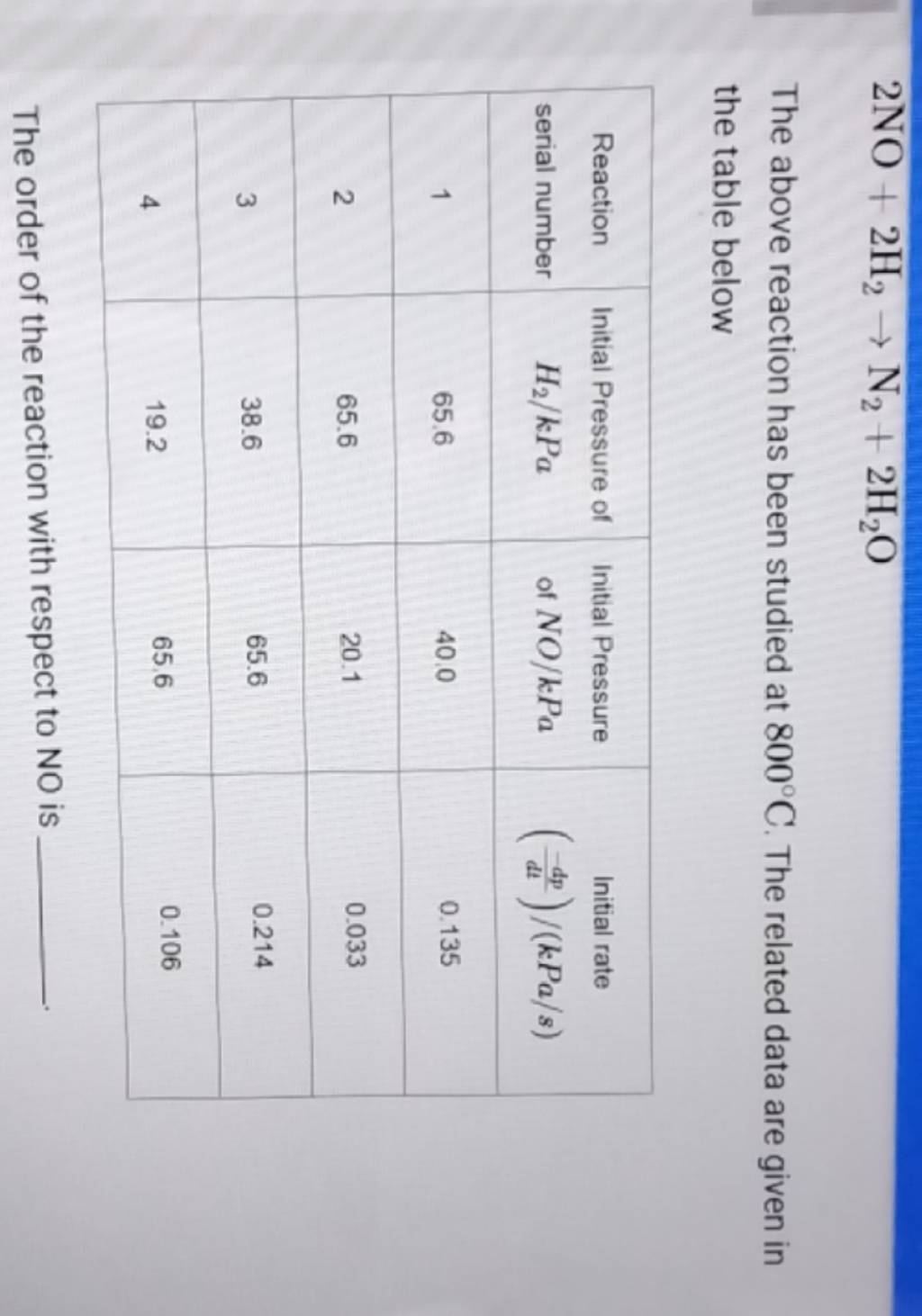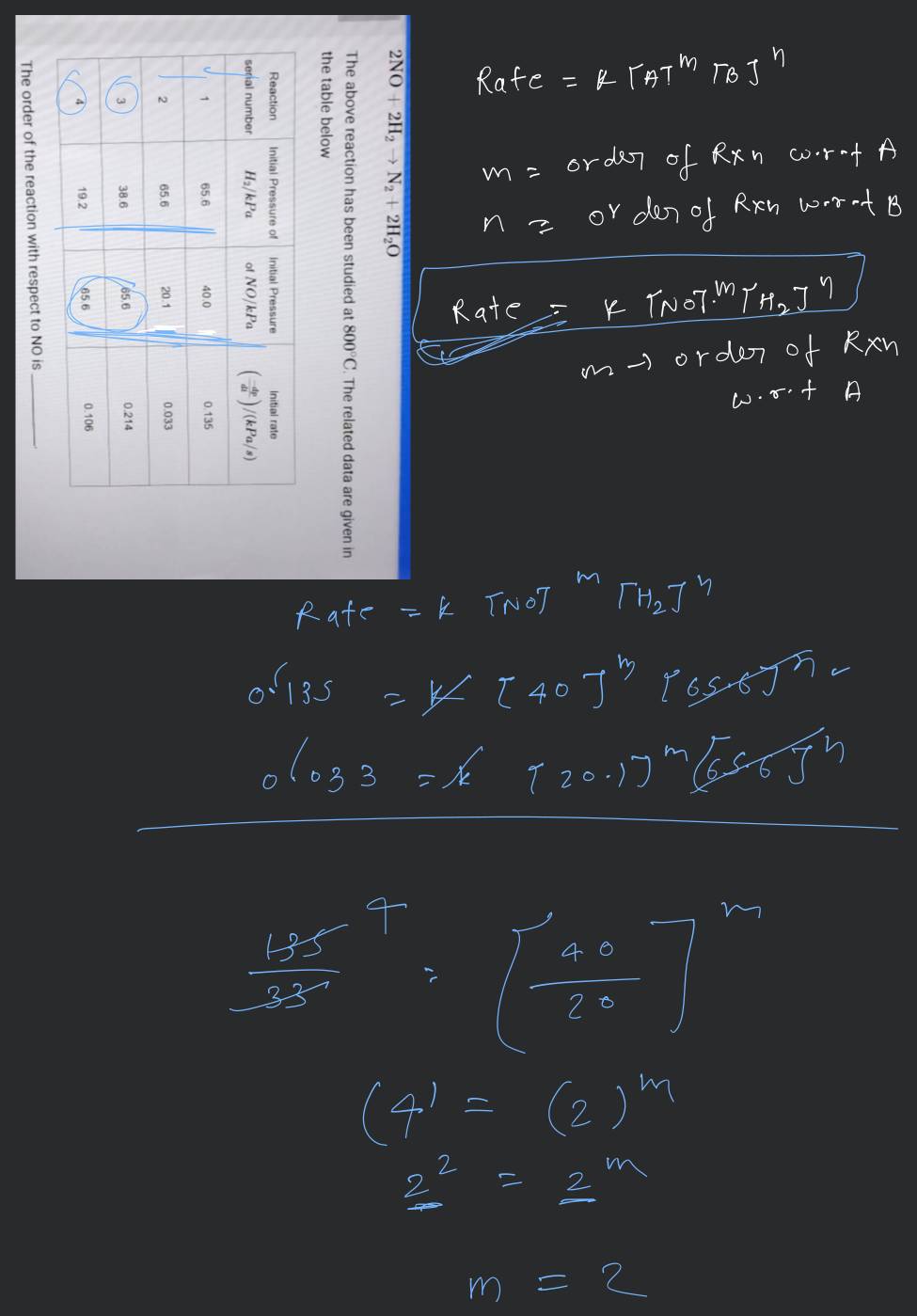Question
Question asked by Filo student

The above reaction has been studied at . The related data are given in the table below
| Reaction | $\begin{array}{c}\text { Initial Pressure of } | ||
|---|---|---|---|
| \text { serial number }\end{array}\begin{array}{c}\text { Initial Pressure } | |||
| \text { of } \mathrm{NO} / \mathrm{kPa}\end{array}\begin{array}{c}\text { Initial rate } | |||
| \left(\frac{-d p}{d t}\right) /(\mathrm{kPa} / \mathrm{s})\end{array}$ | |||
| 1 | 65.6 | 40.0 | 0.135 |
| 2 | 65.6 | 20.1 | 0.033 |
| 3 | 38.6 | 65.6 | 0.214 |
| 4 | 19.2 | 65.6 | 0.106 |
Found 8 tutors discussing this question
Discuss this question LIVE
9 mins ago

One destination to cover all your homework and assignment needs
Learn Practice Revision Succeed

Instant 1:1 help, 24x7
60, 000+ Expert tutors

Textbook solutions
Big idea maths, McGraw-Hill Education etc

Essay review
Get expert feedback on your essay

Schedule classes
High dosage tutoring from Dedicated 3 experts
Practice more questions on Chemical Kinetics
Question 1
Medium
Views: 5,381
Question 2
Easy
Views: 5,442
Question 3
Easy
Views: 5,302
Students who ask this question also asked
Question 1
Views: 5,229
Question 2
Views: 5,155
Question 4
Views: 5,440


Stuck on the question or explanation?
Connect with our Chemistry tutors online and get step by step solution of this question.
231 students are taking LIVE classes
| Question Text |
The above reaction has been studied at . The related data are given in the table below
The order of the reaction with respect to NO is |
| Updated On | Mar 18, 2023 |
| Topic | Chemical Kinetics |
| Subject | Chemistry |
| Class | Class 12 |
| Answer Type | Video solution: 1 |
| Upvotes | 56 |
| Avg. Video Duration | 6 min |




